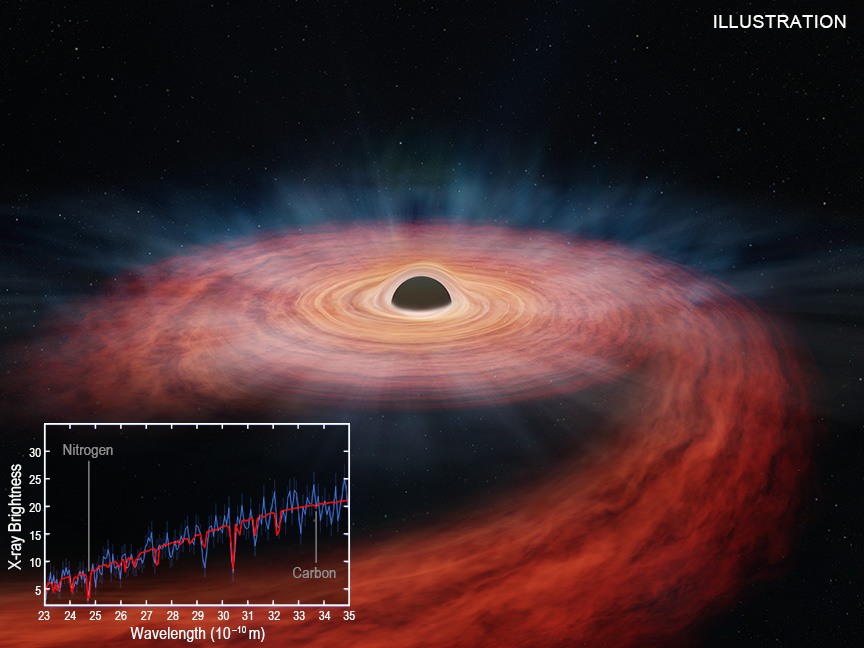
 Credit: NASA/CXC/Univ of Michigan/J. Miller et al.; Illustration: NASA/CXC/M.Weiss; Press Image, Caption, and Videos
Credit: NASA/CXC/Univ of Michigan/J. Miller et al.; Illustration: NASA/CXC/M.Weiss; Press Image, Caption, and Videos
Fingerprints of the Decedent
Incautious stars that wander too close to supermassive black holes lurking at the centers of many if not most galaxies are playing a dangerous game. If a star gets too close, the black hole's gravity can rip the star to shreds. The image above shows an illustration of a stream of stellar matter from a star torn apart and gradually accreted by a supermassive black hole. A signature of thes "tidal disruption events" is a series of spectacular outbursts of electromagnetic radiation near the center of a galaxy, produced as streams of material from the disrupted star are gradually accreted into the black hole. Since the 1990's about 100 such tidal disruption events have been observed. Now astronomers believe they have been able to identify the unfortunate stellar victim of a TDE known as ASASSN-14li through a forensic study of the disrupted corpse. As the remnants of the star spirals into the black hole, the material get heated to such high temperatures (millions of degrees) that it emits X-rays. A study of the X-ray spectrum (X-ray brightness versus X-ray energy, or wavelength) using the spectrometers on the XMM-Newton X-ray Observatory and the Chandra X-ray Observatory showed surprising dips (see the inset above). These dips are produced by absorption of X-rays by very hot atoms in the stream. The dips act as a chemical fingerprint of the absorbing material, which can be used to infer the composition of the torn-apart star. The X-ray spectra seen by XMM-Newton and Chandra show that the hot absorbing material has much more nitrogen than carbon. Because the ratio of nitrogen to carbon changes as a result of a star's nuclear evolution, astronomers compared this observed ratio to models of different stars. The X-ray spectra suggests that the star that was torn apart was surprisingly massive, with a mass approximately three times that of the Sun.
Published: August 28, 2023
<
HEA Dictionary ● Archive
● Search HEAPOW
● Other Languages
● HEAPOW on Facebook
● Download all Images
● Education ● HEAD
>

Each week the HEASARC
brings you new, exciting and beautiful images from X-ray and Gamma ray
astronomy. Check back each week and be sure to check out the HEAPOW archive!
Last modified Tuesday, 27-Feb-2024 10:10:17 EST


